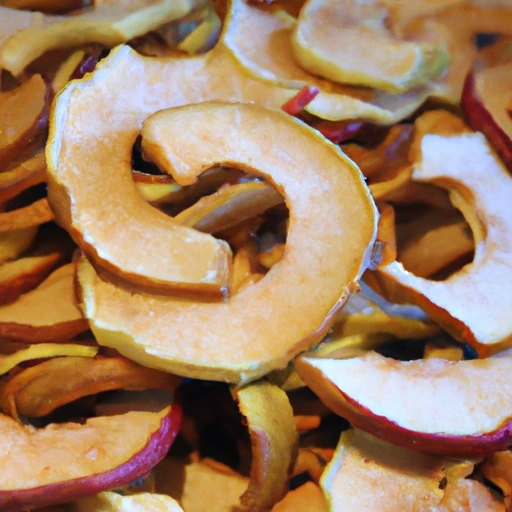Dried Apple
Description

Dried apples are a popular ingredient obtained by removing most of the water content from apple slices. This process concentrates the apple's natural flavors and sugars, making it a sweet, chewy, and shelf-stable product. Dried apples are available in various forms, such as rings, chunks, or even powdered, providing a versatile ingredient for a myriad of recipes. They are used worldwide and are easily adapted to both sweet and savory dishes, from classic American apple pies to European strudels and Asian confections.
Common uses
Dried apples are commonly used as a convenient snack, in baking, in cereals, and as a component in trail mixes. They are often rehydrated for use in recipes, or can be eaten as-is for a sweet treat. Their concentrated apple flavor also makes them a popular addition to spice blends and tea infusions.
Nutritional value
Calories
A 1-ounce (28-gram) serving of dried apples typically contains about 65-70 calories.
Protein
This serving size offers roughly 0.2-0.3 grams of protein.
Fat
Dried apples are low in fat, with less than 0.5 grams per serving.
Carbohydrates
Carbohydrates are present in the form of natural sugars and dietary fiber, with about 17-19 grams in a 1-ounce serving.
Vitamins
While some vitamins may be lost during drying, dried apples still provide vitamin C and various B vitamins.
Minerals
They also contain minerals like potassium and iron, although in smaller quantities than the fresh fruit.
Health benefits
Dried apples retain many of the health benefits of fresh apples, including being a good source of dietary fiber, which aids in digestion and can help manage cholesterol levels. The presence of antioxidants and vitamin C supports the immune system and helps protect against free radicals.
Potential risks
Consumption of dried apples in moderation poses few risks; however, some dried apples may contain added sugars or preservatives like sulfur dioxide, which some people may wish to avoid. As with any dried fruit, they are calorie-dense, so portion control is advised for those monitoring their calorie intake.
Common recipes
Dried apples are used in a wide range of recipes, from breakfast oatmeal and granola to desserts like cookies, cakes, and pies. They're also found in savory dishes such as stuffings and pork dishes.
Cooking methods
They can be rehydrated by soaking in water, juice, or alcohol, and can also be cooked directly in recipes where they'll absorb moisture from other ingredients.
Pairing with other ingredients
The sweet-tart flavor of dried apples pairs well with cinnamon, nutmeg, cloves, and ginger. They complement nuts like almonds and walnuts, cheeses such as cheddar and brie, and meats like pork and chicken.
Summary
Dried apples are a versatile and nutritious ingredient suitable for sweet and savory dishes alike. They provide a concentrated apple flavor and a chewy texture that enhances a variety of recipes from around the world. With a rich historical background and numerous health benefits, dried apples are a staple in global cuisines, offering a delightful taste of tradition and nutrition in every bite.